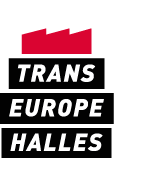MottattoM/ Jardin divers/ Fabrique d’Art
L’ancienne usine sise au 20 avenue Giuseppe Motta laisse ses traces depuis plus d’un siècle dans le quotidien du quartier de la Servette. Réhabilitée par des artistes, artisanes et artisans, actrices et acteurs culturels de diverses couleurs, elle a obtenu une nouvelle vie en tant que lieu de création et de médiation artistique autogéré.
Historique de la fabrique
En 1907, la Société Coopérative Suisse de Consommation (SCSC, crée en 1868, devenue COOP) rachète la parcelle aux héritiers de François Moget. Il s’agit de trois bâtiments (503, 503 bis et 503 ter) utilisés comme laiterie et boulangerie. Il est probable que les bâtiments aient aussi servi pour accueillir des véhicules de transport et de livraison.
En 1910, l’architecte Edmond Fatio dépose une requête au nom de la SCSC pour construire “des écuries de remise”. Il s’agit de deux longs corps de bâtiment, parallèles l’un à l’autre, disposés dans la longueur de la parcelle. Ils comptaient deux niveaux, séparés par une allée centrale et reliés par une verrière au niveau de la toiture.
Au rez-de-chaussée, dans le corps nord, des stalles avec un petit espace réservé au garçon d’écurie, un dépôt d’avoine et un local pour les outils; en vis-à-vis, dans le corps sud, des remises à chars.
Le niveau supérieur était sans doute réservé au foin, et pour entreposer des marchandises.
Seule une moitié du bâtiment est réalisée selon les plans de l’architecte. Il devait mesurer 50 mètres en longueur, il n’en fait que 25. Pour quelques années, les anciens bâtiments 503 et 503 bis sont ainsi conservés. Un chauffage est installé dans les parties occupées par les chevaux.
En 1912, une maison néo-XVIII est construite à front de rue avec logements et sellerie.
(L’ensemble est cadastré: stalles n° 1776, chars n° 1775.)
En 1920, la SCSC connait une importante expansion et l’espace pour ses véhicules devient insuffisant. L’architecte Léon Belloni ajoute un vaste appendice à l’arrière du bâtiment de 1910 pour les voitures; une petite partie nord-est reste dégagée, appelé “le jardin”.
En 1924, des travaux sont effectués, probablement dans le but de transformer les écuries en garages automobiles.
Entre 1929-30, Léon Belloni signe les plans d’un nouvel agrandissement.
En 1957, un échange de terrain a lieu entre la ville de Genève et la SCSC.
En 1958, la ville de Genève loue la salle arrière à la Société des Compteurs Electriques (SODECO), une entreprise voisine.
En 1961, la SODECO obtient le droit de superficie. Elle effectue des travaux dont la surélévation d’une partie du bâtiment pour créer des dépôts. Le bâtiment connait divers dégats.
En 1978, SODECO refait une partie des toitures et pose des ferblanteries sur le pourtour de la verrière et sur le trappon de sortie ainsi que des plaques de béton sous la verrière.
En 1985, des dégâts d’eau sont constatés dans une partie construite en 1961 par SODECO.
Le bâtiment est abandonné pendant plus qu’une dizaine d’année avant que des artistes genevois occupent la friche et y installent des ateliers, ainsi que des espaces pour les répétitions, stages, workshops et rencontres.


